 If anyone is qualified to repair the damaged state of acting in America, it is Anthony Abeson. And if you didn’t know the craft was in crisis, spend an hour or so talking with the highly credentialed acting coach, and see if you aren’t suddenly incensed over the film and television industry’s rigorously superficial approach to casting.
If anyone is qualified to repair the damaged state of acting in America, it is Anthony Abeson. And if you didn’t know the craft was in crisis, spend an hour or so talking with the highly credentialed acting coach, and see if you aren’t suddenly incensed over the film and television industry’s rigorously superficial approach to casting.
While the title of Abeson’s forthcoming book, Must Be Strong Actress… And Look Great in Lingerie, might be humorous, it’s actually taken from a very real casting breakdown for a television show he is kind enough to not mention. And though he can laugh about the brusqueness of such criteria, he is acutely aware of its enervating effect on the spirit of his students.
To combat this artistic insensitivity, Abeson performs what he terms "triage" for the actor. Applying his wealth of knowledge gleaned from the greatest theatrical minds of the twentieth century (and Abeson studied with them all: Lee Strasberg, Harold Clurman, Stella Adler, Peter Brook and Jerzy Grotowski), the veteran acting coach challenges his students to deliver work "quickly and deeply". He cites the glory of the Moscow Art Theatre, where a paucity of dialogue never engendered a dearth of emotional truth. Every actor on the stage or in the frame has a responsibility to connect with the material and, by extension, the audience, transforming them. As Abeson says on the front page of his website, "Our job as actors, from forever, has been to render our audiences more human by virtue of our own humanity."
It may be anathema to feel too deeply in this cynical, image-conscious age, but by emphasizing type over talent, we’re reducing artists to objects, a loss we can ill afford. The industry may care more about using talent than developing it, but Anthony Abeson most certainly does not. Give him enough time, and, through his students, he just might imbue the rote likes of CSI: Wherever with a little human verisimilitude.
Q: Looking over your biography, the names that jump out are the giants: Lee Strasberg, Harold Clurman, Stella Adler, Peter Brook…
Anthony Abeson: That was a deliberate choice on my part when I was much younger. I didn’t want to shake the hand that shook the hand; I wanted to directly study with the ones I felt were the giants.
Q: When did you first realize that you had a facility for performing?
Abeson: It struck me very young. At the risk of sounding presumptuous or pompous, I think for some actors, myself included, it’s a calling. And some callings strike you very young. I also believe that when you’re in the grip of something like that, it doesn’t necessarily arrive with any sense of whether you have a facility for it or not. You just have to do it. It didn’t even occur to me whether I was good or not (Laughs); I just had to do it. And the very first form that it took, believe it or not, was my desperate urging of my parents to let me take tap lessons. I think I was about five or six.
Q: What spurred that?
Abeson: This need to perform. It just happened to take that form. My guess is that I was influenced by some of the musical variety shows that were on TV at the time. Who knows? But that was the form it took. You do know that I’m a teacher now? (Laughs)
Q: Of course! I just wanted to discuss your background a little.
Abeson: I think that’s significant in a way. [Jerzy] Grotowski once said to me, "A teacher or a director has to have had experience as an actor to teach or direct actors." Then he paused, and said, "They don’t necessarily have to have succeeded as actors; they just need the experience." (Laughs) So I’m glad that I did it. And I still am, in my soul, an actor. And I think that helps me relate to actors; I certainly know and understand and really like them. I could go further and say I treasure them. The other day I said to one of my classes, "Do you realize that you are a national, natural resource?" Because I don’t think right now that there is an awful lot in the culture that is designed to give them that sense of themselves – of who they are, and how important they could be to the human race.
Q: That’s certainly not something we hear too often. With actors, there is a tendency to ridicule them or complain about them. They’re either flighty or moody or all sorts of things. It’s the creative temperament, obviously, and everyone in the theater has their little behavioral tics.
Abeson: What you’re speaking of is personality, but what I’m trying to address is essence. For example, I don’t believe that you see the same kind of behavior, at least to the same extent, in classical musicians or dancers. This is just a crazy theory that I’m cooking up as we speak, but I’m very aware that as performing artists we lack any kind of vocabulary. We don’t have the specific notes and tempi that the musician has to adhere to. We don’t have the vocabulary of movement that the dancer has, which makes the practicing and the evaluating of the art form extremely precise. And I think that lacking those kinds of fixed banks for our river, that allows the actors’ river sometimes to overflow, to lose its strength and maybe flood or do damage… and I’m going to abandon this metaphor now. (Laughs) But I think there’s a real connection somehow between the lack of precise, quantitative criteria and what you refer to as "tics".
Since I’m concocting crazy theories here, can I please go a step further?
Q: Please do.
Abeson: The indulgence that you allude to in terms of actors and the directors who complain about them, sometimes for good reason… I think it goes back to what I said: there’s not a lot in the culture right now that is honoring and valuing the legacy and the specialty of what actors carry within them. There’s a tremendous amount of perception of actors as sex objects. The title of my book, Must Be Strong Actress… and Look Great in Lingerie… that’s not something I made up. That’s an actual breakdown from a project they were casting a year or two ago. But if I could address the subtitle: Restoring the Ancient Potencies of Acting. When I talk about specialty, as opposed to being "hot" or "sexy" or "looking great in lingerie", I believe the real actors, the ones who are called to it… carry within them a really special ancient form of DNA. I think that 10,000 years ago or so, when the human race was first starting to engage in some form of culture and ritual, I think that even back then… let’s say they went out and killed a Woolly Mammoth and they brought it back. Most of the people in that clan wanted to know what the hunt was like. And most of the people who asked that question wanted to sit down and hear about it. But there were always one or two oddballs, who actually wanted to get up and show them. One would put on the skin still smoking from the kill, one would pick up the spear, and they would act that sucker out. That’s why the cover of my book is a cave painting. To me, that tendency to tell the story in front of the others, and also to transform, to become the Woolly Mammoth… I believe that this is a race that’s existed from the dawn of time. The ones that have to get up and do this, I think they’re carrying that ancient strain. I think that’s really special. And 10,000 years ago, that was critical to the psychic spiritual well being of the community. I mean, who did they turn to when the sun seemed to be disappearing around the Winter Solstice? Who would dance it back, and sing it back? Who would plant hope like an evergreen in their hearts? It was our ancestors, the ancestors of the actors, who did that.
Part of what I’m addressing in my book, and part of what animates me on a daily basis, is the gap between that kind of enormous, majestic heritage and what we’ve got today. A network wanted to see this kid do something, so he worked with me on two monologues: one from Chekhov and one from Williams. We were so excited! A network wanted to see him do something! I said, "James, you have to call me right afterwards." So he called me, and I said, "Which one did they like the most?" He said, "Neither." I said, "What do you mean?" He said, "They didn’t want to see the monologues." I said, "Jesus, what did they want to see!?!?" And I swear to God, Jeremy, he said, "What did they want to see? They wanted to see me with my shirt off holding an automatic weapon."
Q: Sounds about right.
Abeson: That is a pretty far distance from what I’m speaking of, which is the actors as runways for the human spirit.
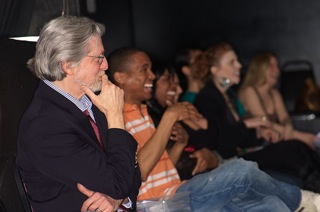 Q: As far as film and television go, and how they’ve come to incorporate and view acting… you know, they have to make days, and they don’t want actors who are going to be any trouble. They just want actors who are going to give them real basic, real clichéd emotion. There used to be directors, like Sidney Lumet, who really treasured the acting process and who really got deep into it in rehearsal. Those guys are very scarce anymore.
Q: As far as film and television go, and how they’ve come to incorporate and view acting… you know, they have to make days, and they don’t want actors who are going to be any trouble. They just want actors who are going to give them real basic, real clichéd emotion. There used to be directors, like Sidney Lumet, who really treasured the acting process and who really got deep into it in rehearsal. Those guys are very scarce anymore.
Abeson: Yes. And I think what I’m operating to some extent is triage. In my classes, I’m constantly working on sides from film and television, and constantly trying to raise the material, not lower ourselves, under battle conditions. Under the duress of time, the limitations of material, the demands of casting… I’m still trying to, on a weekly basis, demonstrate that it’s possible to still create something – the life of the human spirit, for example. It’s still possible. It doesn’t have to be like "Oh, we can either create if we’ve got two months of rehearsal, or we just have to phone it in because it’s hopeless." I’m saying there’s a third possibility: you can deliver work quickly and deeply. That’s a challenge, but I believe Thoreau was right: you shoot the arrow as high as you can even though you know it can fall to Earth.
Q: Obviously, one of your students who’s mastered this is Jennifer Aniston. She stepped into a show like Friends, where you have to hit the ground running and, yet, be funny and in complete command of your craft. I think we always saw that from her on that show, and, when the material is decent, in movies. I thought she terrific in The Break-Up. I suppose that’s something for which you can take credit?
Abeson: Oh, god, no! Did you see what she wrote about me on my website? She was very generous about that. But the thing that’s remarkable, and something I can’t take credit for, is what she had when I met her. That story about doing Chekhov and people laughed; with your theater background, I’m sure you remember that Stanislavsky drove Chekhov crazy. Chekhov kept saying, "These are comedies!" Particularly with regard to Three Sisters, which is what Jennifer was working on at the time. Chekhov said, "You’re making my characters crybabies!" For decades and decades, this was one of the classic artistic nuts to crack: how to find the humor in Chekhov – which is very pastel and, admittedly, difficult to discover. And here was this kid who was a teenager at the time who just naturally solved it. It was remarkable! She just went in there and made Chekhov truthful, and she found the humor! That’s really astonishing! I can’t take credit for that. But what I also tried to share with Jennifer, and what I say to everybody, is, "Listen, that’s the kind of talent that deserves to work with the giants." I would love to see her do Molière. I would love to see her tackle some of O’Neill’s heroines. But this is not the kind of culture that is really alive to the concept of developing talent; they’re much more alive to the concept of using it.
Q: It’s self-destructive, too, because the "product" that gets sent out there is not nourishing. It’s there, and it’s gone in an hour or two, and there’s nothing to take from it. And by continuing to cheapen the actors’ journey, they really are doing great damage to the art.
Abeson: And, by extension, to the American people. Going back to the function of the cave, it’s the complete reversal of that now. It was very nourishing and crucial to the spiritual health of the community, and, now, it’s really fast food. But it doesn’t have to be.
Q: I guess the challenge, then, is to wean the viewer off that fast food diet.
Abeson: Believe me, the minute they see something good… the need for human stories is so ancient in the human soul, it really doesn’t take that long. The audience is hardwired for a receptivity to that despite the fact that maybe they don’t experience it all the time. But just as the DNA for performing is so ancient, so is the DNA hardwired in the audience for being transported.
Q: Going back to the title of your book and idea of actors being reduced to their physical attributes, there was recently an incident involving Natalie Portman, who, for the first time in her career, did a nude scene. And it’s a big deal because, men being men, they’ve always wanted to see her nude. (Anthony laughs.) And she does it in this short film directed by Wes Anderson, so it’s kind of respectable. But after she does it, and the film turns up online, she instantly regrets it. Do you think this has to do with surrendering a sort of mystery, of giving away too much?
Abeson: Oh, my god, yes! I keep thinking about two things as you’re talking, and I think I put them in my book – but if I didn’t, I’m going to go back and put them in. You’re speaking of a common phenomenon which has to do with displaying yourself rather than revealing the truth. That’s a very big part of what we’re up against today. The culture or the industry is saying, "Display yourself! Show us your naked body!" When, in fact, the more profound calling for the actor is the revealing of the truth. And the second dichotomy that is on my mind is the idea that they want her to bare her flesh, but both parties – both actor and audience – would be better served by her baring her soul. And, again, it goes back to this culture we’re in, and it’s a big part of the impetus behind my writing this book. I wrote in the forward that it is inimical to the artist; it’s coarse. The actor is delicate – not in the sense that they have to be spoiled or indulged. But they’re delicate because they’re sensitive to imaginary reality. That’s a great sensitivity. In fact, that’s one way you could define their talent. Tennessee Williams wrote in this wonderful poem, "The moths are dying. Enemies of the delicate are everywhere." Even though it was written decades ago, I think it’s very apt for the present.
Q: Most of what Tennessee Williams wrote is apt for the present. In writing your thesis and pulling all of these ideas together, I’m wondering how you distilled the teachings of, say, Strasberg and Clurman and Grotowski. Do you feel like you’re taking bits of wisdom from each of these mentors?
Abeson: I have been influenced by all of them in various and sundry ways. The most important point to make about being exposed to that kind of bewildering variety of teachers, many of whom, as you know, disagreed violently with one another – for example, Strasberg and Adler.
Q: Oh, yes.
Abeson: The rift between them has had historical repercussions in the American acting community. But that incredible and fundamentally contradictory variety of influences… before we pin down a particular thing or trace it back to a particular source, the big thing that I benefited from was being inoculated against any kind of notion of recipe. Because when you don’t study with just one person and learn only one thing, when you learn from all of these contradictory people, there’s no way that you’re going to treat every actor the same way. There’s no way that you’re going to want to make everyone do it one way. Stanislavsky was right when he said, "There are no recipes. Whatever works."
And there are people and places that will try to impose a kind of one-size-fits-all training or methodology on a vast variety of actors. I think that’s as insane and destructive as the hair stylist who gives everyone the same cut regardless of the shape of their face or the size of their head. For human beings, there cannot be any recipes.
Q: That one-size-fits-all approach is very popular, though. Thinking back to my training as an actor, I recall having two teachers with very different approaches. One of them was very focused on playing actions. And you could never play "to be sad"; you had to use strong, active verbs like "to sink".
Abeson: I agree with that. That’s a good thing.
Q: And I certainly gravitated toward that. But then I had another teacher whose background was corporeal mime. He studied with Étienne Decroux. And this was problematic for me because corporeal mime was a very specific form of training. It requires a good deal of physical grace. And while I’ve always been a fairly athletic guy, I’ve never been particularly graceful. I’ve also battled a gut for most of my life. So that kind of training alienated me, and I fell out of acting because I just couldn’t connect with it.
Abeson: That’s very tough. Decroux’s work is fabulous, but extremely precise and defined. At the same time, the underlying idea that you should know what you’re doing – which is that orientation toward action and active verbs – is really important. And you should also have an instrument that can carry it out. Not necessarily to execute walking against the wind (Laughs), but to have an instrument that actually can take a line which seems to be just talk and turn it into action. That’s another thing we’re coming up against a lot in class: one of the other ways the art has been degraded is that it’s been reduced not just to sexuality, but to talking. Acting is doing. And it takes some training to be able to discern "What are you doing? What are you actually accomplishing by means of the talking, rather than what are you talking at the expense of doing?" Even staying on a mark, even staying in the frame, even sitting on a chair in a room in a casting office, that instrument has to be able to still summon its energy to the task of accomplishing something. Even if you’re sitting, you can still convince somebody or plead with somebody. So underneath that awful experience that you had, there is some validity: you should know what you’re doing, and you should be able to do it.
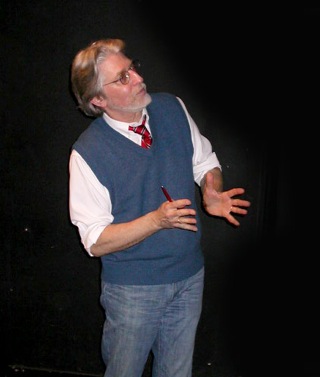 Q: That idea of being able to achieve something transformative even in a casting office or in a insipidly written scene, I guess that goes back to the sense of play that all actors must possess. They need to have that joy of invention.
Q: That idea of being able to achieve something transformative even in a casting office or in a insipidly written scene, I guess that goes back to the sense of play that all actors must possess. They need to have that joy of invention.
Abeson: I’ve said it a thousand times, and I think I can honestly give credit to Stella Adler for formulating it: "Your talent is in your choices." If you have ceased playing, that means some part of your imagination, your ability to make those choices, has died. In class, even when they stand up, I make them make a choice about it. Don’t just stand up because I’m saying, "Okay, let’s stand up." At that moment, you’re just a slave actor; the director is saying "Do something," and you’re doing it. Stand up for an "exciting reason" is how I put it. We’re trying to revive what, in my madness, I call the "choice-making muscle". I really believe that muscle exists. It was very, very fertile and well-oiled when we were kids. The difference between standing up for no reason at all and standing up because you just won the Academy Award is remarkable. (Laughs) And at that moment, you’re playing and you’re engaging your choice-making muscle and you’re imagining things, and you’re able to have infinitely more fun than if you just stood up because someone told you to.
Q: Unmotivated movement is so funny. When I started directing, I used to get a kick out of watching actors go through the mental process of "Gee, I’ve been sitting at this table for an awfully long time. Maybe I should get up." And you’ll see the most awkward movement, like people walking to a strange part of the stage for no reason other than to move. And you’re like, "What are you doing?"
Abeson: Because they have all of this excess energy. One definition of tension is "excess energy". They’ve got all this energy, and they’ve got nowhere to put it except into the words, which is why all those actors who are stranded like that put far too much energy into their line readings. And that’s also when they start to wander about for no reason at all. And, yet, isn’t it funny? Shelly Winters once said, "If I know that I want to go into that kitchen and make a cup of coffee, I don’t need a goddamn director to tell me what to do." And she’s right. What she’s saying is a very profound, basic principle of acting; if you know what you want, then common sense and logic is going to tell you what to do to get what you want. And the chances are that wandering about for no reason at all is not going to get you what you want. This is why Stanislavsky said, "Real life crumbles on the stage." In real life, you go, "I want to get out of the house to make my appointment" or "I want to go into the kitchen and make a cup of coffee"? Bang! You would do the action that’s required to get what you want. And then when you get up on the stage, that real life, common sense, logical pursuit of what you want crumbles. And there you are, talking and wandering. (Laughs)
Q: Well, I’m sure by the time Shelly Winters said that, she knew how to get where she needed to go given the space with which she was working. And that’s another important thing for actors: learning how to maintain your sense of play whilst working within a framework.
Abeson: It goes back to something I said early in this interview. I alluded to the fact that a river has to have fixed banks. And if those banks aren’t fixed, then the river is going to overflow, do damage and lose its force. You know, this is a culture that thinks, "Yo, I want my freedom, so don’t give me any limits", when, in fact, the opposite is true. It’s only when the river’s banks are fixed and limiting that there exists freedom and force and spontaneity.
Q: In terms of the performances that you see nowadays, do you feel like you’re still seeing a high quality of work in film and on stage?
Abeson: First of all, I am not as aware of what’s on. I just don’t watch that much TV. Even when my students are on a show, sometimes it’s just hard; we’ve got kids and animals and all sorts of things. (Laughs) If it’s going to come down to seeing one of my students on Greek or helping my daughter study for the Spanish test, it’s going to be the Spanish test.
But with that proviso that I’m not too hip to the culture, I will say that I did see Big Love. My sister-in-law turned me on to it. She sent me all of the DVDs, and I was astonished because that was the first time in my recent memory that I had seen on commercial television a group of actors function like a… real old-fashioned acting ideal of an ensemble. Every character, down to the tiniest part, was fascinating – even when they had hardly any lines! I was just thrilled. I know this is a real reach, but one of the reasons the Moscow Art Theater was so lauded was because even the servants were fully rounded characters who were interesting and artistically creative and moving. I swear to god, Jeremy, every single character [on Big Love], I found myself fascinated by them and looking eagerly forward to when they might reappear.
Q: That show does have a great cast.
Abeson: And Strasberg was right: casting is fifty percent of a show.
Q: Some people would place it at an even higher percent. But, a few obvious caveats aside, I’ve always felt that there’s no actor who’s completely wrong for any role.
Abeson: Absolutely. Isn’t that part of what acting is about? The ability to go back to that Woolly Mammoth hunt? One of the things that they carried in their DNA was the ability to become other people. Stanislavsky said that it was a kind of transformation, a reincarnation into another human being. The tendency to bring everybody down to your own self-portrait is really destructive – not only to the art form, but to the actor’s talent that they carry within them. They have an amazing tendency to transform into other people, and it’s very often being left to atrophy. One of our birthrights is our bizarre ability to become other people.
Q: And how strangely liberating that can be.
Abeson: In fact, as Stanislavsky discovered about himself, there are two kinds of actors. One kind of actor is very comfortable playing themselves. Stanislavsky was paralyzed by that; he didn’t understand how anyone could do that. But there’s another kind of actor who is only liberated by becoming other people. I don’t in any way look down on actors who are comfortable playing themselves as long as they start with themselves, but do not end with themselves. Some actors need to be released through character. And despite industry pressure to paint self-portraits, it’s still possible to create the life of a human spirit, to "light a candle than to curse the darkness." And if you light that candle in the actor, that actor is going to light the audience.
To read more about Mr. Abeson, be sure to visit his official website.
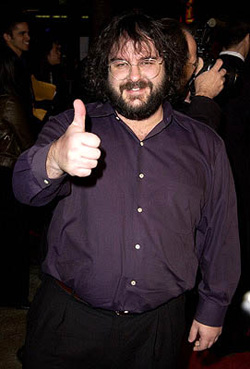 It’s feeling a bit rumory on the internet these days. The latest to come down the pike arrives thanks to MarketSaw – a blog I never heard of before this week when they broke a picture of an Avatar alien apparently legit enough to force Fox lawyers to send out cease and desist letters – who claims that Peter Jackson is indeed coming back to New Line to film The Hobbit, and he’s doing it as a duology. But wait, there’s more! MarketSaw also claims that he’ll be making the movies in 3D, and converting the Lord of the Rings films into 3D for rerelease around 2012.
It’s feeling a bit rumory on the internet these days. The latest to come down the pike arrives thanks to MarketSaw – a blog I never heard of before this week when they broke a picture of an Avatar alien apparently legit enough to force Fox lawyers to send out cease and desist letters – who claims that Peter Jackson is indeed coming back to New Line to film The Hobbit, and he’s doing it as a duology. But wait, there’s more! MarketSaw also claims that he’ll be making the movies in 3D, and converting the Lord of the Rings films into 3D for rerelease around 2012.

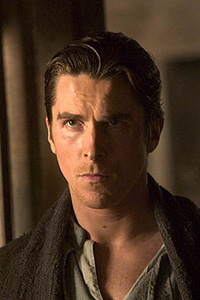 Last week Harry Knowles and I both learned that Christian Bale would be in
Last week Harry Knowles and I both learned that Christian Bale would be in  If anyone is qualified to repair the damaged state of acting in America, it is Anthony Abeson. And if you didn’t know the craft was in crisis, spend an hour or so talking with the highly credentialed acting coach, and see if you aren’t suddenly incensed over the film and television industry’s rigorously superficial approach to casting.
If anyone is qualified to repair the damaged state of acting in America, it is Anthony Abeson. And if you didn’t know the craft was in crisis, spend an hour or so talking with the highly credentialed acting coach, and see if you aren’t suddenly incensed over the film and television industry’s rigorously superficial approach to casting. Q: As far as film and television go, and how they’ve come to incorporate and view acting… you know, they have to make days, and they don’t want actors who are going to be any trouble. They just want actors who are going to give them real basic, real clichéd emotion. There used to be directors, like Sidney Lumet, who really treasured the acting process and who really got deep into it in rehearsal. Those guys are very scarce anymore.
Q: As far as film and television go, and how they’ve come to incorporate and view acting… you know, they have to make days, and they don’t want actors who are going to be any trouble. They just want actors who are going to give them real basic, real clichéd emotion. There used to be directors, like Sidney Lumet, who really treasured the acting process and who really got deep into it in rehearsal. Those guys are very scarce anymore. Q: That idea of being able to achieve something transformative even in a casting office or in a insipidly written scene, I guess that goes back to the sense of play that all actors must possess. They need to have that joy of invention.
Q: That idea of being able to achieve something transformative even in a casting office or in a insipidly written scene, I guess that goes back to the sense of play that all actors must possess. They need to have that joy of invention.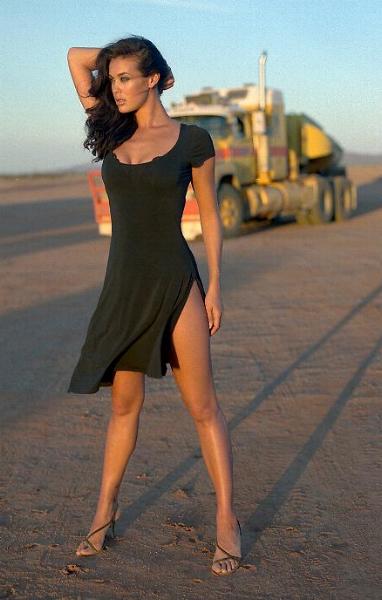 It’s just a
It’s just a 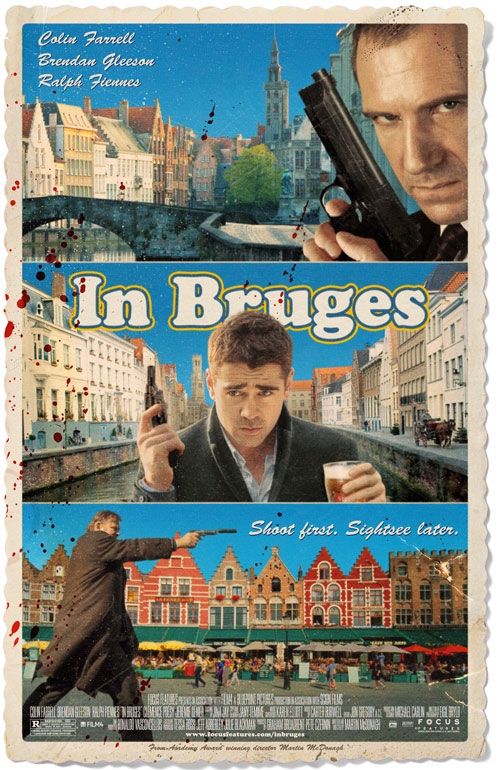
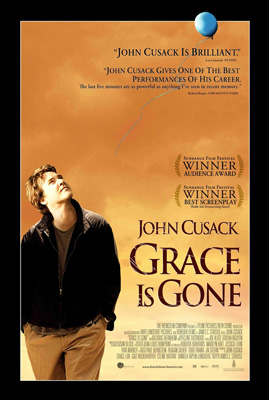 A couple of months ago, John Cusack was being touted as a Best Actor contender for his performance as a grieving father of two in James C. Strouse’s
A couple of months ago, John Cusack was being touted as a Best Actor contender for his performance as a grieving father of two in James C. Strouse’s 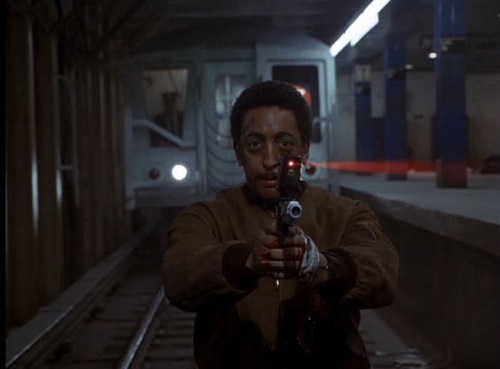
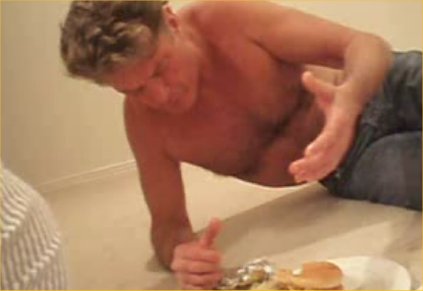 After
After